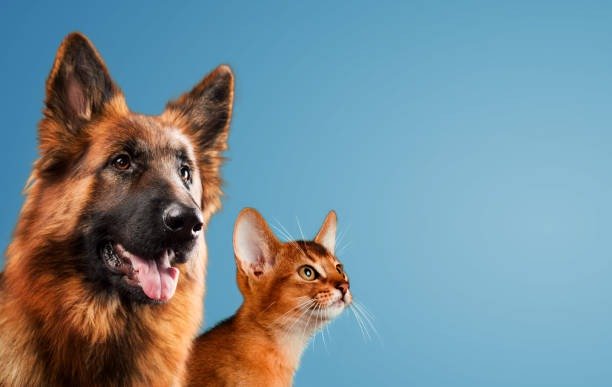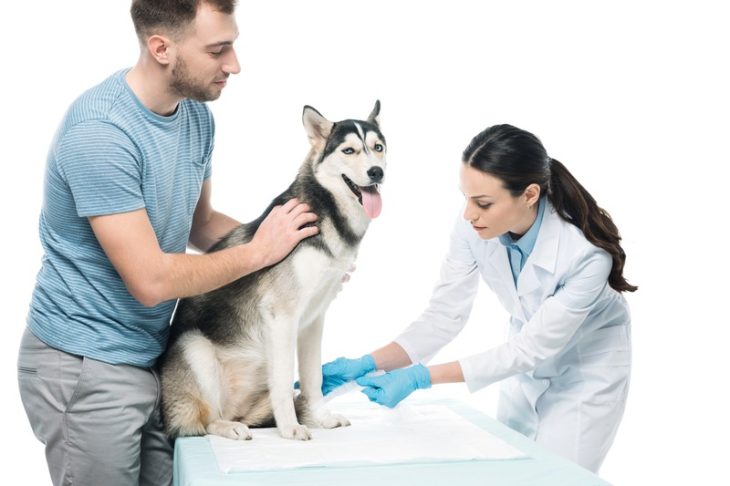Our furry friends can’t tell us when something’s wrong, especially with something as delicate as their eyesight. This means it’s up to us to keep an eye out for any unusual signs. Recognizing the early indicators of eye disease in our cats and dogs can make a huge difference in treatment and prognosis. Since eye problems can escalate quickly, understanding these symptoms can help us take swift action to prevent discomfort and potential vision loss for our beloved pets. Let’s talk about the signs that suggest a trip to the vet might be in order.
What Are the Early Warning Signs?
Our pets’ eyes are as complex and sensitive as our own. Detecting eye diseases early can save your cat or dog from discomfort and more serious health issues. If you need expert care, consider consulting a veterinary ophthalmologist in Renton, WA. Here are some critical signs that could indicate an underlying eye condition:
1. Redness and Inflammation
Description:
Redness and inflammation of the eyes are common indicators of eye disease. Conditions such as conjunctivitis, glaucoma, or uveitis can cause these.
What to Look For:
-
Swollen, red eyelids
-
Redness in the whites of the eyes
-
Bloodshot appearance
2. Excessive Tearing or Discharge
Description:
Increased tear production or unusual discharge can signal an eye problem. Clear, watery discharge might indicate irritation, while yellow or green discharge can suggest an infection.
What to Look For:
-
Watery eyes
-
Thick, colored discharge
-
Crusty buildup around the eyes
3. Cloudiness or Changes in Eye Color
Description:
Cloudiness or color changes in the eyes can be early signs of cataracts, corneal ulcers, or other serious conditions.
What to Look For:
-
Cloudy or milky appearance in the eye
-
Blue, gray, or white film over the eye
-
Color changes in the iris
4. Squinting or Blinking
Description:
Frequent squinting or blinking indicates that your pet is experiencing discomfort or pain in their eyes, often due to irritation, injury, or infection.
What to Look For:
-
Constant or frequent squinting
-
Excessive blinking
-
Keeping the eye partially or fully closed
5. Rubbing or Pawing at the Eyes
Description:
Pets often rub or paw at their eyes when they are irritated or painful. This behavior can exacerbate the issue if not addressed promptly.
What to Look For:
-
Frequent rubbing of the eyes with paws
-
Rubbing eyes against furniture or the floor
-
Scratching at the eyes
6. Changes in Vision or Behavior
Description:
Changes in vision can manifest as altered behavior. Pets may become hesitant to move, bump into objects, or show reluctance to jump or climb.
What to Look For:
-
Bumping into furniture or walls
-
Hesitancy in navigating familiar areas
-
Reluctance to jump or climb stairs
7. Visible Third Eyelid
Description:
The third eyelid, or nictitating membrane, is usually not visible in healthy pets. If it becomes noticeable, it can indicate an underlying issue.
What to Look For:
-
The third eyelid covers part of the eye
-
White or pinkish membrane visible in the inner corner of the eye
8. Swelling or Bulging Eyes
Description:
Swelling or bulging of the eyes can indicate serious conditions such as glaucoma, tumors, or abscesses.
What to Look For:
-
Swollen eyelids or eye area
-
Bulging or protruding eyes
-
Uneven appearance between the eyes
9. Light Sensitivity
Description:
Increased sensitivity to light, or photophobia, can be a sign of several eye conditions, including uveitis and corneal damage.
What to Look For:
-
Avoiding bright light
-
Squinting in well-lit areas
-
Seeking darker places
10. Behavioral Changes Related to Pain
Description:
Eye pain can cause significant behavioral changes in pets. They may become more irritable, less active, or exhibit signs of distress.
What to Look For:
-
Increased irritability or aggression
-
Decreased activity or playfulness
-
Whining, growling, or other signs of discomfort
Common Eye Diseases in Cats and Dogs
Now that we’ve covered the early warning signs let’s look at some common eye diseases you might encounter, including dog and cat eye disease.
-
Cataracts: Cataracts cause a cloudy film to develop over the lens, leading to impaired vision or even blindness if left untreated. A typical sign is a whitish appearance in the pupil.
-
Conjunctivitis: Often referred to as pink eye, conjunctivitis is the inflammation of the conjunctiva, resulting in redness, swelling, and discharge. It is quite common and can be very uncomfortable for your pet.
-
Glaucoma: Glaucoma is a serious condition involving increased pressure within the eye. If not treated promptly, it can lead to blindness. Symptoms include bulging eyes, cloudiness, and severe redness.
-
Uveitis: Uveitis is the inflammation of the inner eye structures, often caused by infection, trauma, or autoimmune diseases. It’s usually painful and can have signs such as squinting or watery discharge.
-
Keratitis: Keratitis involves inflammation of the cornea, resulting in pain, redness, and sometimes ulcers on the eye’s surface.
The Role of Professional Help
The Importance of Regular Check-ups
Preventative care plays a huge role in maintaining your pet’s eye health. Regular check-ups can catch the early signs of eye disease before they become a serious problem. Scheduling annual visits for your pet, or more frequently if they have existing health issues, is a smart preventive strategy.
Educating Yourself Is Key
Being informed about pet health is vital. Taking the time to check their home page for better understanding of the signs, symptoms, and treatments of dog and cat eye disease and other eye conditions in pets can equip you with the knowledge to spot potential problems early.
Final Thoughts
As pet owners, monitoring our pet’s eye health is crucial for their well-being. Eyes are delicate and can reflect overall health. At the first sign of trouble, consult your vet, who will help manage any issues. Vigilance ensures pets live comfortably and happily. When their tails wag, and their eyes sparkle, it shows we’ve done our job right.



